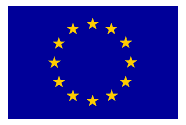Single Cell Imaging of Gene Activation during Oxidative Neuron Death: Towards Quantitative Systems Approaches.
Ischaemic stroke and neurodegenerative disorders are leading causes of death and disability and their incidence is rising rapidly due to increases in European life expectancy. Excessive apoptosis is pathogenic when it concerns post-mitotic cells such as neurons; for instance in stroke or neurodegenerative diseases. Oxidative stress is a major contributor to ischemic and neurodegenerative processes; however, the molecular mechanisms and biological switches that determine outcome, i.e. neuronal tolerance or neuronal apoptosis, in response to oxidative stress are not fully characterised. This aim of this project is to analyse these events at the single cell level. The applicant has an excellent track record in the molecular analysis of pro-apoptotic gene activation in response to oxidative stress. Here, we propose to monitor and quantify the activation of cytoprotective (ARE- and HSE-containing) vs. pro-apoptotic (BIM) gene expression in neurons and astrocytes in real-time using GFP-based reporter assays and employing quantitative confocal and epifluorescence microscopy approaches. The quantitative single-cell data obtained will be incorporated into mathematical models of apoptosis activation developed by the host laboratory. The suggested fellowship will advance our understanding of this critically important biological process by allowing for a quantitative analysis of this signalling/gene activation network. The fellow will strongly complement the research activities of the host laboratory, and most importantly, will acquire new skills and be exposed to a unique interdisciplinary training programme. Furthermore, this work could provide important information for the development of new therapeutic strategies for ischemic and neurodegenerative disorders.
 This was an incomingMarie-Curie fellowship awarded to Dr. David Davila De Leon, investigating the role of the transcription factor FOXO3a and the BH3-only protein Bim in the control of excitotoxic injury and oxidative stress-induced neuronal injury.This project has received funding from the European Union’s Seventh Framework Programme for research, technological development and demonstration.
This was an incomingMarie-Curie fellowship awarded to Dr. David Davila De Leon, investigating the role of the transcription factor FOXO3a and the BH3-only protein Bim in the control of excitotoxic injury and oxidative stress-induced neuronal injury.This project has received funding from the European Union’s Seventh Framework Programme for research, technological development and demonstration.